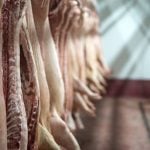The first time Alberta grain farmer Jay Schultz remembers hearing about cabbage seedpod weevil was in 2005 at the University of Alberta when Dr. Lloyd Dosdall warned that it could become a major pest in the province. Schultz, who farms 6,000 acres near Standard, Alta., said that he never really paid attention, that is, until […] Read more













